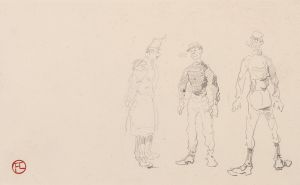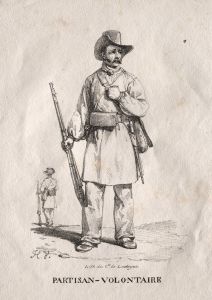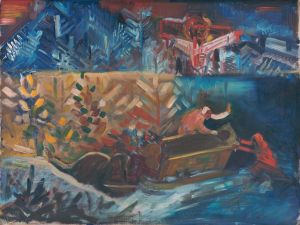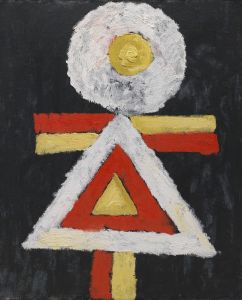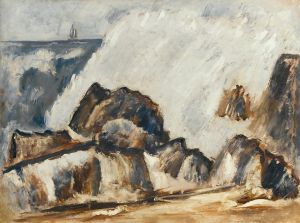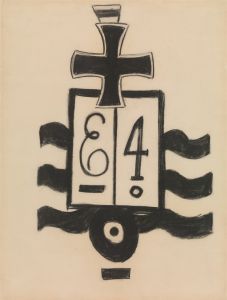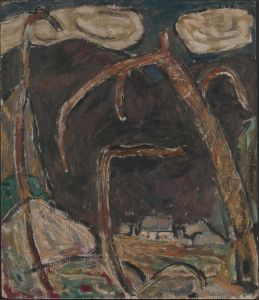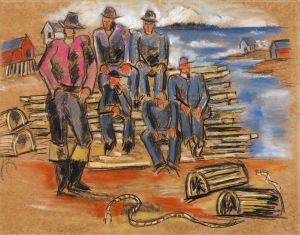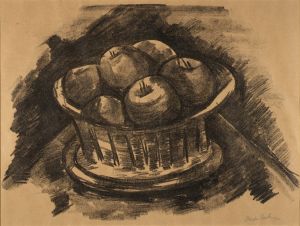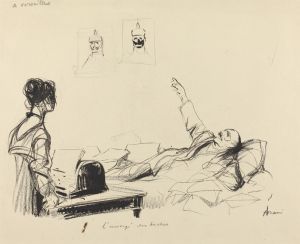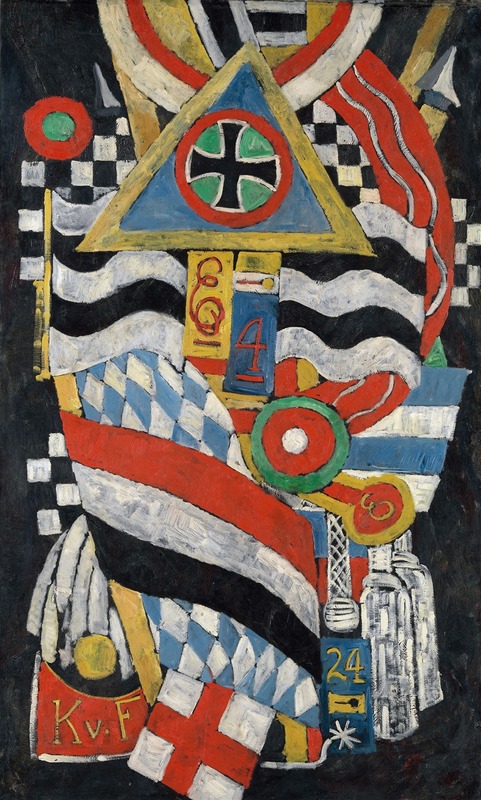
Portrait of a German Officer
A hand-painted replica of Marsden Hartley’s masterpiece Portrait of a German Officer, meticulously crafted by professional artists to capture the true essence of the original. Each piece is created with museum-quality canvas and rare mineral pigments, carefully painted by experienced artists with delicate brushstrokes and rich, layered colors to perfectly recreate the texture of the original artwork. Unlike machine-printed reproductions, this hand-painted version brings the painting to life, infused with the artist’s emotions and skill in every stroke. Whether for personal collection or home decoration, it instantly elevates the artistic atmosphere of any space.
"Portrait of a German Officer" is a painting created in 1914 by the American modernist artist Marsden Hartley. This work is one of Hartley's most famous pieces and is part of a series of abstract paintings that he produced during his time in Germany. The painting is widely regarded as a tribute to Karl von Freyburg, a young German officer and close friend of Hartley, who died in World War I. Hartley was deeply affected by von Freyburg's death, and this loss became a central theme in his work during this period.
The painting is not a traditional portrait but rather an abstract composition filled with symbolic imagery. It incorporates bold colors, geometric shapes, and various symbols associated with German military and national identity. Among the elements depicted are the Iron Cross, regimental flags, and other military insignia, which are interwoven with personal references to von Freyburg. The work reflects Hartley's admiration for German culture and his emotional response to the war and personal loss.
"Portrait of a German Officer" is often interpreted as a synthesis of Hartley's personal grief and his exploration of modernist aesthetics. The painting demonstrates his engagement with Cubism and German Expressionism, movements that influenced his artistic development during his stay in Europe. The use of fragmented forms and vibrant colors creates a dynamic and visually striking composition that conveys both a sense of order and emotional intensity.
The painting is part of the collection of the Metropolitan Museum of Art in New York City, where it continues to be celebrated as a significant example of early 20th-century American modernism. It is frequently studied for its innovative approach to portraiture and its reflection of the cultural and historical context of World War I.





